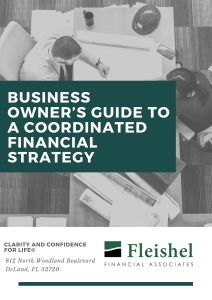The main thing to remember about creating a plan is that you have to write it down. Running through figures in your head isn’t going to cut it. Coming up with a retirement plan that includes estimating future expenses and income is the best way to anticipate any hurdles getting in the way of your long-term plans.
2. Paying too much in fees.
There are a lot of fees that pop up in retirement accounts, including trading commissions, expense ratios, mutual fund front-end loads, and maintenance fees. All of them eat into your retirement savings over time. The best way to offset this is to look for low or free trading commissions and invest in index mutual funds or exchange-traded funds which are very low cost.
3. Forgetting about taxes.
If you’re active in saving for your retirement and regularly look at the sum in your 401(k), remember, that money still has to be taxed. So, don’t get too excited when you look at your balance. You can’t avoid paying taxes.
What you can do, though, is offset this by diversifying your retirement with after-tax accounts. One of the most common ways to do this is to open a Roth IRA. Because this money is put into your retirement account after taxes, you can withdraw it tax-free in retirement. You can also save money in a taxable investment account which requires you to pay annual taxes on dividends and capital gains at a tax rate that is much lower than regular income tax.
When it comes time to withdraw funds, you can use this tax-free money to manage your income taxes in retirement. If a distribution from your 401(k) is going to push you into a higher tax bracket, you can withdraw from your Roth IRA instead to keep your income taxes lower.
4. Taking on the wrong amount of risk.
It’s hard to figure out how aggressive you should be when it comes to investing and your bottom line can suffer whether you take too much risk or not enough. A good thing to remember is that you should take on a little more risk if you have more than five years to let your money sit. This is the best way to take advantage of long-term market growth because you can ride out any volatility.
If you’re close to retirement and you’re going to start withdrawing money in less than five years, being too aggressive can be a problem because you don’t have time to make up for any losses.
5. Withdrawing money early.
Ideally, you should have some bank savings separate from your retirement account to draw from in the event of an emergency. Things happen but, too often, people withdraw from their retirement when they don’t really have to.
Remember, if you make a withdrawal from your 401(k) before retirement, you’re not only going to pay taxes on that money, you’re also going to pay a potential 10% penalty. This means you’re getting much less of your money than you would if you were able to wait until retirement.
6. Not saving enough.
Sometimes, this happens because you didn’t know any better. Other times, the resources just weren’t available. Either way, there are some ways to make up for it.
One thing you can do it work longer. That doesn’t mean you have to continue working full time in your field. Sometimes, all you need is a lower-paying part-time job to tide you over until you can retire. It’s important to remember that this might not be an option for everyone. An unexpected health issue or another emergency may come up and prevent you from working.
In that case, the other option is to trim spending. In fact, this is always a good idea. Cutting back on expenses any time throughout your life can make a huge difference, especially if it allows you to save more for retirement and learn how to live on a trim budget.
7. Working longer.
Some people don’t know exactly how prepared they are for retirement and keep working because they assume they can’t afford it. Turns out, they had enough to retire years ago and ended up working into their 70’s when they didn’t really need to.
This is pretty common. Figuring out how retirement savings work with Social Security benefits can be tricky. Still, sitting down and putting a plan on paper can help you figure out exactly when the time is right.
Opinions expressed are not necessarily those of Raymond James. The information has been obtained from sources considered to be reliable, but we do not guarantee that the foregoing material is accurate or complete. Past performance is not a guarantee of future results. Investing involves risk and investors may incur a profit or a loss.
ETF shareholders should be aware that the general level of stock or bond prices may decline, thus affecting the value of an exchange-traded fund. Although exchange-traded funds are designed to provide investment results that generally correspond to the price and yield performance of their respective underlying indexes, the funds may not be able to exactly replicate the performance of the indexes because of fund expenses and other factors.
Investors should consider the investment objectives, risks, charges and expenses of an exchange traded product or a mutual fund carefully before investing. The prospectus contains this and other information and should be read carefully before investing. The prospectus is available from your investment professional.





0 Comments